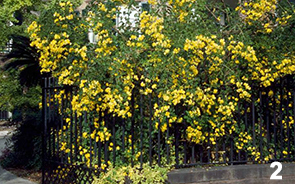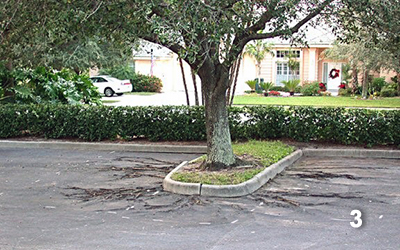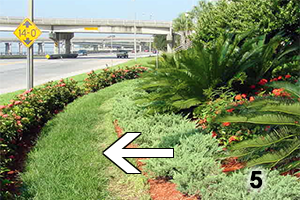Plant Placement
Common Landscape Pitfalls that Affect Plant Health – Plant Placement Edition
Landscapes with plants that match their preferred growing conditions require less water, fertilizer, pesticides, and maintenance than landscapes with plants growing in the wrong locations. When choosing the right plant for the right place, there are a number of factors to consider to ensure a long-lived, healthy landscape. Planting location plays a huge role in the well-being of your landscape plants.
Plant Placement
In addition to putting plants in conditions that meet their preferred growing requirements, correct watering, light and soil requirements, as well as salt and wind tolerance, it is important to allow space for plants to reach within range of their mature size.
Proper plant spacing allows for air to circulate around the plant; crowded plants are more susceptible to diseases and require excessive pruning. Plants should not need to be pruned more than twice a year. If a plant needs more frequent pruning, it likely doesn’t have enough room to grow.
The photo on the left below (fig. 1) shows butterfly bushes that are poorly spaced, over-crowded, and poorly pruned. When planted with enough room to grow and properly pruned, butterfly cassia should look more like the one in the photo on the right below (fig. 2).


Providing adequate space for trees to grow is equally important. When thinking of tree spacing, remember they need space below, for roots to grow, and space above for the canopy to spread. Tree roots can spread and disrupt the hardscapes around them, as in the photo below (fig. 3).


Mature canopies should have enough that they will not touch structures or buildings they grow near. The photo on the right (fig. 4) shows trees with canopies growing too close to the building. Keeping plants away from buildings will also help you adhere to another right-place practice — not planting under eaves. Plants under eaves may not receive adequate rainfall, or alternately they could be damaged by the force of rainwater running off the roof.
In areas where grass is difficult to grow, shrubs and groundcovers are a better choice. Avoid narrow turf strips (as in the photo below; fig. 5) that are difficult to mow and irrigate. All shrubs should have perimeters at least 3 feet away from buildings and foundations.

Also on Gardening Solutions
- Common Landscape Pitfalls that Affect Plant Health – Irrigation Edition
- Common Landscape Pitfalls that Affect Plant Health – Plant Quality Edition
- Common Landscape Pitfalls that Affect Plant Health – Soil Type and Plant Health Edition
- Planting and Establishing Trees
- Planting Palms
- Planting and Establishing Shrubs
